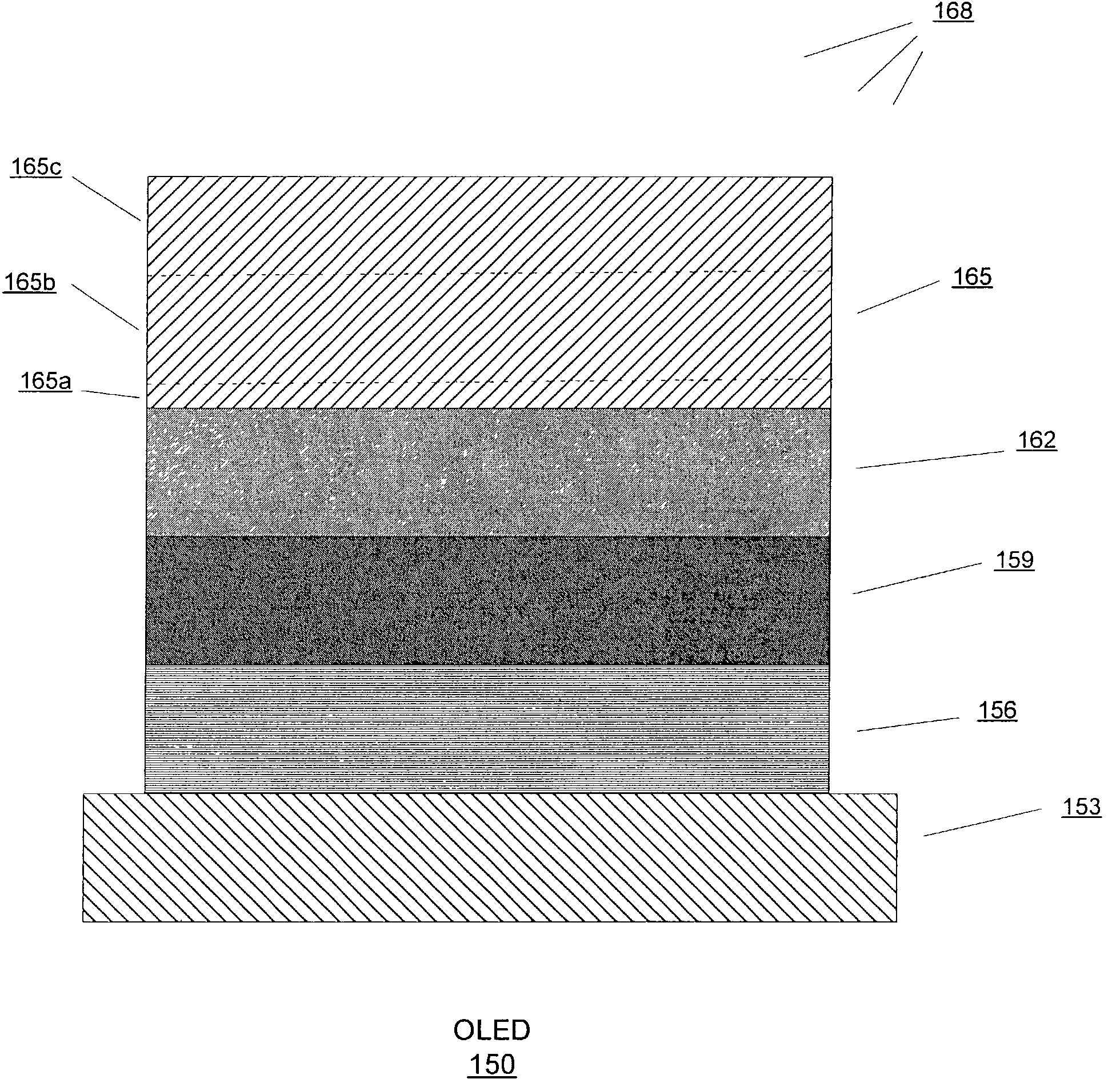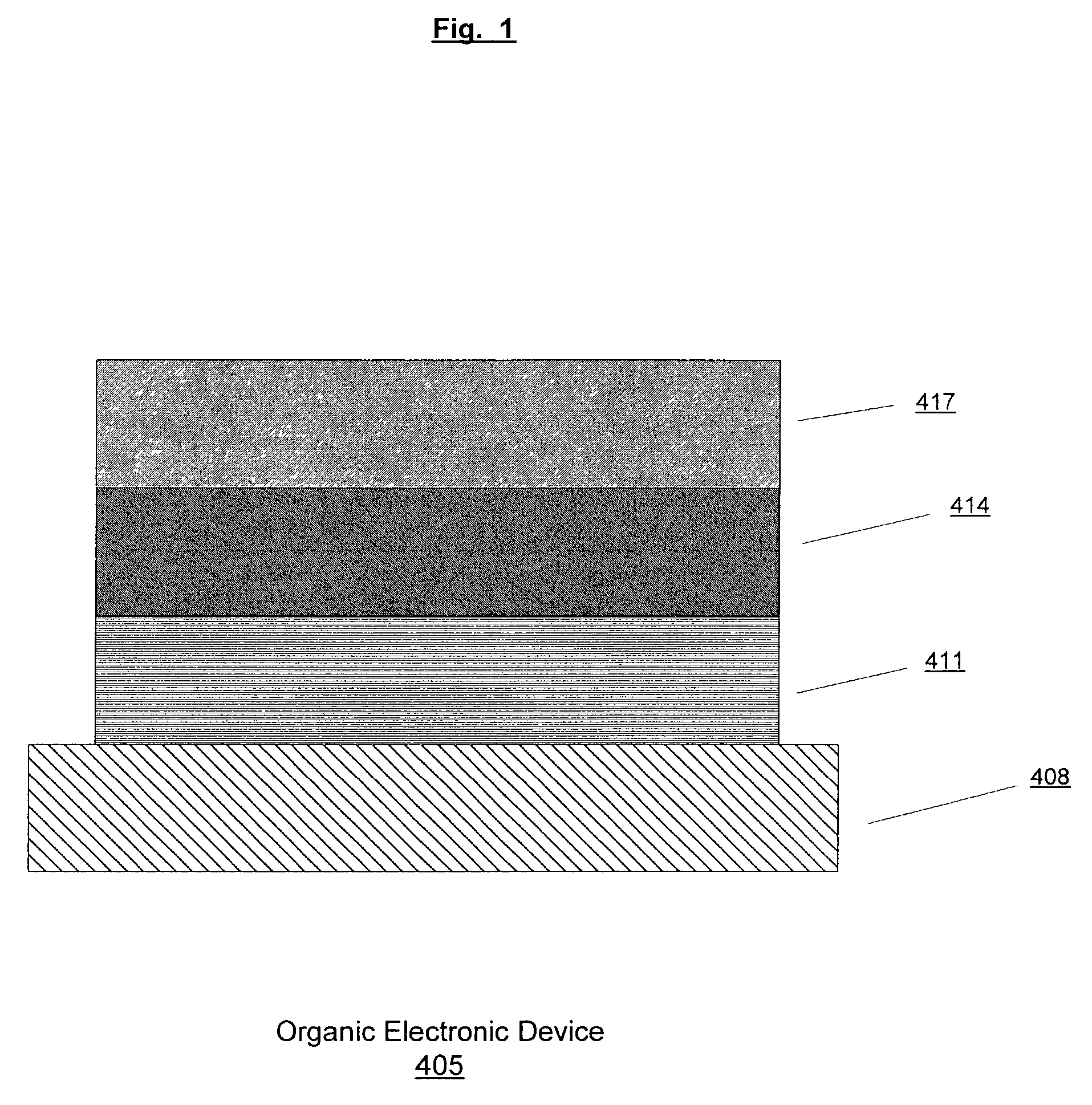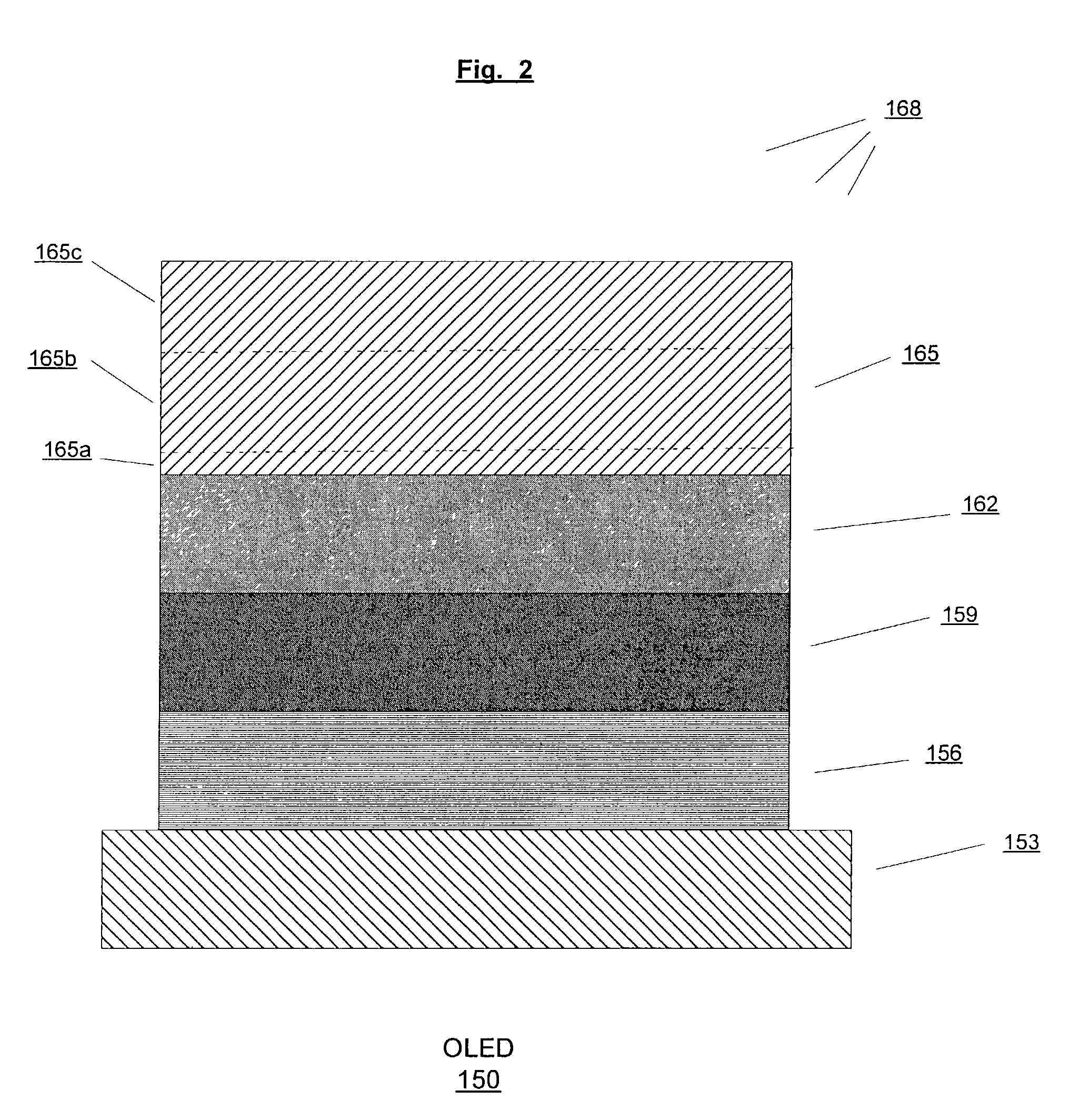Electroluminescent devices and method of making transparent cathodes
a technology of electroluminescent devices and cathodes, which is applied in the manufacture of electrode systems, electric discharge tubes/lamps, and discharge tubes luminescent screens, etc., can solve the problems of difficult to achieve reasonable contrast of the image generated by the display, the cathode layer is highly reflective, and the transparent electrode materials such as indium tin oxide (“ito”) cannot be used as cathodes
- Summary
- Abstract
- Description
- Claims
- Application Information
AI Technical Summary
Problems solved by technology
Method used
Image
Examples
second embodiment
[0046]FIG. 8 shows an OLED 177 according to the present invention. In FIG 8, a barrier layer 165d is deposited on the electron injecting layer 165a and the conductive layer 165b is deposited on the barrier layer 165d. The barrier layer 165d minimizes or eliminates reaction between the electron injecting layer and the conductive layer. Reaction between the electron injecting layer and the conductive layer may reduce charge injection from the conductive layer to the emissive polymer layer thus adversely affecting luminance and efficiency of the OLED. In one configuration, the barrier layer 165d is comprised of a conductive layer such as a gold layer or an aluminum layer. The barrier layer 165d is thick enough to minimize or eliminate reaction between the electron injecting layer and the conductive layer but not too thick that it not substantially transparent. In this embodiment, the thickness of the barrier layer 165d varies from about 0.1 nm to about 20 nm and preferably is from abou...
third embodiment
[0047]FIG. 9 shows an OLED 210 according to the present invention. In this embodiment, a capping layer 171 is vacuum-deposited onto a top electrode such as the cathode layer 165 to improve, for example, the conductivity and lifetime of the OLED 210. The capping layer 171 provides higher luminance and efficiency due in part to the light reflection from the capping layer and also the higher current injection into the emissive polymer layer 162. In this embodiment, the capping layer 171 is comprised of a metal such as, for example, aluminum, silver, magnesium, or an alloy thereof. In other embodiments, the capping layer 171 is comprised of a transparent and conductive material such as ITO, zinc oxide, tin oxide, and zinc sulfide that is deposited by sputtering techniques. The capping layer 171 may also be comprised of black light absorbing conductive organic or inorganic materials. The range of thickness for the capping layer 171 is from about 50 nm to about 10,000 nm; preferably is fr...
PUM
 Login to View More
Login to View More Abstract
Description
Claims
Application Information
 Login to View More
Login to View More - R&D
- Intellectual Property
- Life Sciences
- Materials
- Tech Scout
- Unparalleled Data Quality
- Higher Quality Content
- 60% Fewer Hallucinations
Browse by: Latest US Patents, China's latest patents, Technical Efficacy Thesaurus, Application Domain, Technology Topic, Popular Technical Reports.
© 2025 PatSnap. All rights reserved.Legal|Privacy policy|Modern Slavery Act Transparency Statement|Sitemap|About US| Contact US: help@patsnap.com



